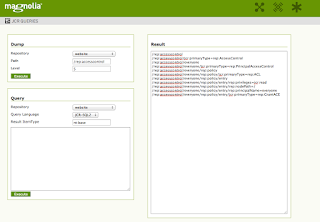The post doesn't try to make clear on the use of these commands, it's more about notes for my future reference only... sorry!
1/ How to get change log version? (my dpkg-parsechangelog version 1.15.11)
Command: dpkg-parsechangelog give you all the changelog information, including version obviously but the point I want is to extract exactly and only version information. So i have to use it in conjunction with grep, sed
# dpkg-parsechangelog | grep Version | sed 's/Version: //g'
sed command is what I have learnt. sed uses with quotes, s/Version: looking for Version, /somecharacters to replace Version with somecharacters, and /g to look for string globally any occurrences will be replaced.
Here is the special case, I look for Version: but in replace I leave it empty so the next option /g goes right after /: sed 's/Version: //g'
Other examples in string manipulation
$ foo="1234567890"
$ echo -n $foo | tail -c 32/ If you want to know which process, program receiving, sending to which host and amount of data use these two commands below
On Recv: sudo watch -n .1 'netstat -tup | grep -E "^[t,u]cp[6]{0,1}" | sort -nr -k2'
On Send: sudo watch -n .1 'netstat -tup | grep -E "^[t,u]cp[6]{0,1}" | sort -nr -k3'
If you suspect that process is being triggered by another process: ps axf
3/ Want to know which file is opened in system, by which user and process id? # lsof
4/ Find out who is logged on and what they are doing
# w username
Ex: w root
5/ How to run specific sudo commands without a password
Use the NOPASSWD directive in /etc/sudoers file
Ex: add this line to /etc/sudoers file
user host = (root) NOPASSWD: /sbin/shutdown
user is the user you want to grant permission on host to run /sbin/shutdown command
Alternative way, you could add the line above to new file under /etc/sudoers.d/; ex: /etc/sudoers.d/shutdown
This way, you won't mess up the /etc/sudoers file, and separate different grants to commands/users
6/ Put your Bash function running in the background?
Use & at the end of your function call; it will be kept alive... forever! and you should set interval for your function to avoid processing consuming that might cause your system unstable
Ex:
function GetFreeMemInBackground {
while true
do
#do something here
sleep 60 # set interval in seconds for your function
done
}
#then run your function in background
GetFreeMemInBackground &
You can also get the Process ID of your called function and keep it for use later, eg: you might want to kill it. The important point, you should get the process right after function call
GetFreeMemInBackground &
BackgroundFuncId=$!
Then kill it later:
kill $BackgroundFuncId > /dev/null 2>&1
7/ You want to get an output of a command and put into variable?
Simply put the command in "$()"
Ex: OUTPUT="$(ls -al)"
Quoting does matter to preserve multi-line values
8/ Want to know Free Memory in system
It is a combination of top, grep, awk
top -l 1 | grep PhysMem: | awk '{print $10}'top -l 1: to get 1 sample of current system information
top -l 1 | grep PhysMem:
then: top -l 1 | grep PhysMem: | awk '{print $10}': to print out the column 10th on the output of grep's output
9/ Want to have cool Terminal foreground and background color like this?
PS1 is all you need, PS1 defines how your terminal styles, colors, position of cursor, and information. You can get the output of command and put into PS1 as well. Like the snapshot above, you can see my cursor tells me current Free Memory in my system.
I have a function running in background, it runs every 60 seconds, get the free memory and put into temporary text file. Then PS1 will output that text file to cursor
Function to get Free Memory and put into text file
function GetFreeMemInBackground {
while true
do
FreeMem="$(top -l 1 | grep PhysMem | awk '{print $6}')"
echo $FreeMem > /Users/phuha/freemem.txt
sleep 60
done
}
GetFreeMemInBackground &
Another function to get Free Memory
function GetFreeMem {
cat /Users/phuha/freemem.txt
}
Then PS1 gets the Free Memory info from function GetFreeMem
PS1='[FreeMem: `GetFreeMem`] '${userColor}'\u: '${pathColor}'\w'${themes[$(((RANDOM % 23)))]}'\n\$ '
10/ Install Java 8 on Debian
su -
echo "deb http://ppa.launchpad.net/webupd8team/java/ubuntu trusty main" | tee /etc/apt/sources.list.d/webupd8team-java.list
echo "deb-src http://ppa.launchpad.net/webupd8team/java/ubuntu trusty main" | tee -a /etc/apt/sources.list.d/webupd8team-java.list
apt-key adv --keyserver hkp://keyserver.ubuntu.com:80 --recv-keys EEA14886
apt-get update
apt-get install oracle-java8-installer
exitRef:
http://www.tecmint.com/command-line-tools-to-monitor-linux-performance/
http://www.binarytides.com/linux-commands-monitor-network/
http://www.cyberciti.biz/tips/top-linux-monitoring-tools.html
http://www.grymoire.com/Unix/Sed.html#uh-30
http://askubuntu.com/questions/159007/how-do-i-run-specific-sudo-commands-without-a-password
http://bash.cyberciti.biz/guide/Putting_functions_in_background
https://wiki.archlinux.org/index.php/Color_Bash_Prompt
http://www.webupd8.org/2014/03/how-to-install-oracle-java-8-in-debian.html
http://tldp.org/LDP/abs/html/string-manipulation.html





